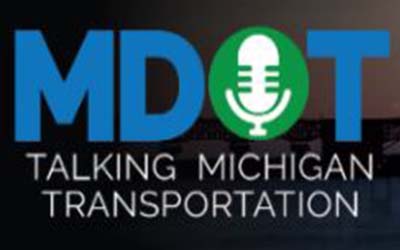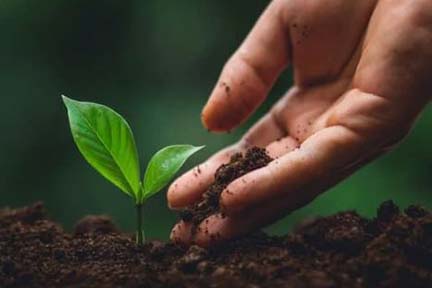
MDOT: Surprises on traffic safety messages
|

|


Media contact:
Lynsey Mukomel
FOR IMMEDIATE RELEASE:
Thursday, April 28, 2022
LANSING – The Elder Abuse Task Force (EATF) will host the first of two virtual symposiums next week to highlight topics relevant to protecting Michigan’s seniors and answer questions from attendees.
Michigan Attorney General Dana Nessel will open the public event. Those interested in participating can learn more by visiting the registration page online.
“The EATF continues to pursue important advocacy on behalf of our state’s elderly population,” Nessel said. “I encourage those interested in learning more about the task force’s impact and vital resources to attend this symposium.”
Scheduled topics include:
Last month, the EATF released a new video on the Department’s YouTube page focused on the general rights each nursing home resident has and must be afforded, as well as steps to take in the event a resident’s rights have been violated.
Other EATF resources on YouTube include training modules on how to recognize, report, and prevent adult abuse, neglect and exploitation.
More information on the task force’s work can be found in its latest newsletter, which was released at the beginning of the year.


FOR IMMEDIATE RELEASE April 28, 2022 Contact: [email protected]
Gov. Whitmer Launches Outstanding Michigan Students Recognition Initiative During Student Appreciation Week Parents, extended family, teachers, staff, and coaches encouraged to nominate outstanding students
LANSING, Mich. — Today, Governor Gretchen Whitmer is seeking nominations from parents, extended family, teachers, staff, or coaches for Outstanding Michigan Students in celebration of Student Appreciation Week. They can be current students of any age who have shown exceptional skills, leadership abilities, or passionate community involvement. Outstanding Michigan students will be recognized by Governor Whitmer. Nominations will be accepted until Sunday, May 1.
“Michigan is home to many talented and hardworking students of all ages, and I’m excited to recognize their contributions and accomplishments to our great state. Whether it’s a third grader spearheading a playground cleanup, a high school senior graduating with high honors, or someone taking the next step to further their education, I know there will be many amazing stories shared,” said Governor Whitmer. “We want students to know that we are doing everything we can to support them in their journey, which is why we’ve made record investments in our students, schools, and postsecondary education without raising taxes. We will continue improving every kid’s in-class experience, supporting educators who put their heart and soul into the classroom, and delivering resources to help schools upgrade facilities and equipment. Let’s keep working together to put Michigan students first.”
From her first day in office, Governor Whitmer has worked towards expanding and investing in opportunities for Michigan students. She made the largest education investment in state history for three years in a row without raising taxes. These investments have helped to close the funding gap between schools in Michigan, expand access to preschool programs for 22,000 more four-year-olds, and distributed resources to expand mental health supports for our kids. She also established and fully funded Futures for Frontliners and Michigan Reconnect to provide tens of thousands of Michiganders with tuition-free higher education or skills training that leads to a high-skill, good-paying job. These historic investments in our students ensure that they will receive a world-class education and help every student reach their full potential.
Nominate a student by clicking the following link: michigan.gov/outstandingstuden
Read more about how Governor Whitmer is supporting students, parents, and educators by clicking the following link:
|

 |
|||||||
Showcasing the DNR
|
|||||||
|
|||||||
| The Michigan Department of Natural Resources is committed to the conservation, protection, management, use and enjoyment of the state’s natural and cultural resources for current and future generations. For more information, go to Michigan.gov/DNR. |

“Our Main Street communities engaged quickly and creatively with their local small businesses to help them adjust, survive, and reopen safely during the pandemic,” Oakland County Executive Dave Coulter said. “As vital economic development partners with the county, they coordinated grant programs from their own resources, as well as the county and state grants, and distributed PPE to small businesses.”
The Main Event runs from 6-9 p.m. and is open to anyone interested in historic preservation and the economic development of downtowns and historic commercial districts. Tickets are $35 and available online until May 1 at AdvantageOakland.EventBrite.com.
The keynote address, “How Story Saved the Nation’s Main Streets,” will recount the beginnings of the main street movement in the 1980s. Means and three novice main street managers began to write a different story about historic downtowns, never imagining that 40 years later the movement would develop into a vibrant network of more than 1,600 communities in 40 states. She will share her insights, how the power of story underpins it all, and what she envisions for Main Street’s future.
Twenty-five MSOC communities were eligible to submit nominations. They are Auburn Hills, Berkley, Birmingham, Clarkston, Clawson, Farmington, Ferndale, Franklin, Groveland Township, Hazel Park, Highland, Holly, Holly Township, Lake Orion, Lathrup Village, Leonard, Madison Heights, Oak Park, Ortonville, Oxford, Pontiac, Rochester, Royal Oak, South Lyon, and Wixom.
During the ceremony, MSOC will make an announcement regarding presenting sponsor DTE Foundation. MSOC will also recount program milestones and recognize the other sponsors who are Genisys Credit Union, SMART, McLaren Oakland, Dobrusin Law, and Oakland County Business Finance Corporation.
About Mary Means
As the CEO of Mary Means & Associates in Maryland, Means is a leader in place-based community development, helping communities optimize their historic character. She has committed her life to helping clients build bridges between plans and people and has been recognized by the American Planning Association, who gave her its “Planning Pioneer Award.” The National Trust for Historic Preservation named her the recipient of the “Crowninshield Award,” the highest honor in historic preservation. She is the author of “Main Street’s Comeback and How It Can Come Back Again.”
About Main Street Oakland County
Main Street Oakland County (MSOC) is our unique economic development program for downtowns, with a historic preservation philosophy and an emphasis on “sense of place.” We assist local governments, downtown management organizations and nonprofit organizations develop their downtowns and historic commercial corridors as vibrant, successful districts that serve as the heart of their communities. Established in 2000, MSOC is the nation’s first and only county-wide coordinating Main Street program. Our mission is to maximize the economic potential and to preserve the heritage and sense of place of Oakland County’s historic downtowns and commercial districts by encouraging and facilitating the use of the Main Street Four-Point Approach® that emphasizes comprehensive economic development within the context of historic preservation. Since 2001, the cumulative total for new public and private investment in MSOC downtowns is $1,044,243,193.